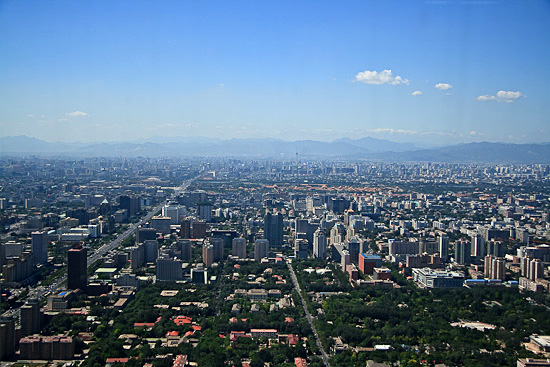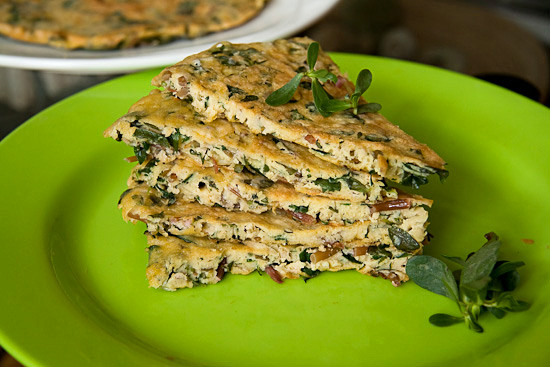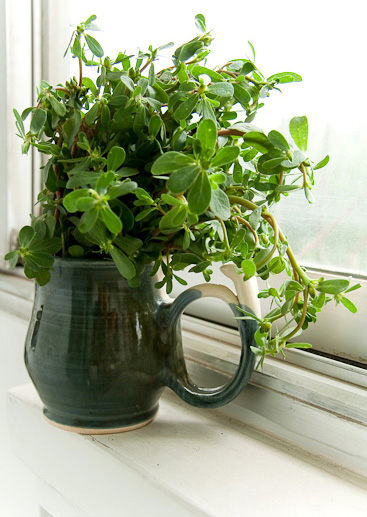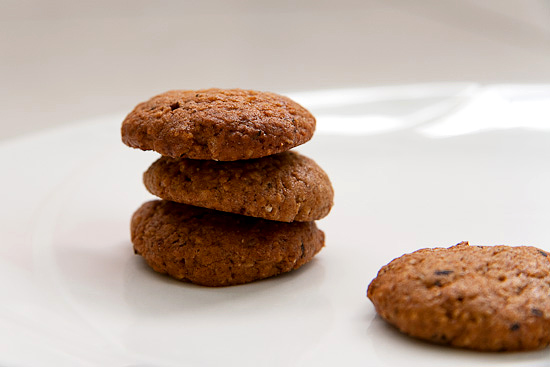 Left: zhahuitou (炸回头), Right: qilin su (麒麟酥), Front: tangmian zhagao (烫面炸糕)
Left: zhahuitou (炸回头), Right: qilin su (麒麟酥), Front: tangmian zhagao (烫面炸糕)
It isn’t often that I’m surprised with a trio of Beijing snacks I’ve never tried before. But the Longfusi Snack Shop (隆福寺小吃店 Longfusi Xiaochi Dian) lives up to its reputation as one of the best places to sample traditional Beijing foods, with everything from flash-boiled tripe (baodu) to more kinds of fried treats than anyone can reasonably eat in a day. Here’s a very small sample:
The zhahuitou (炸回头) was the most delicious – and the most intriguing, not least because of its curious name (“fried look-back”). Think of it as a cross between a wonton and a steamed, stufffed baozi: it has the shape of a wonton, with the ends folded back on itself (hence the name), but also the substantial, chewy dough of a baozi. Much an improvement, as I’ve always found the slippery thin wonton skin too wimpy for all my carbohydrate needs.
These particular specimens are stuffed with a savory filling of beef and lotus root, flavored with a hint of peppercorn, and deep-fried to a golden crunch. Zhahuitou are a specialty of Beijing’s Muslim Hui people, and eaten especially around Ramadan. At Longfusi, you can get them only on weekends year-round, for RMB 2 each.
The qilin su (麒麟酥), on the right, is named for the Qilin or Kylin, a mystical beast that reputedly has the head of a dragon, the antlers of a deer, the eyes of a lion, the back of a tiger, the waist of a bear, the scales of a snake, the hooves of a horse, and the tail of a cow. Complicated, no? And you didn’t even know bears had waists.
Fortunately, this pastry is much simpler (and much more accessible), featuring a rich, deep-fried cake-like pastry stuffed with sweet red bean paste. The whole thing is then dusted with crystalline sugar and coconut flakes, an excellent match with the crisp golden shell of the pastry.
Though I grew up eating zhagao¹ (“fried cakes”), I had never seen tangmian zhagao (烫面炸糕) before. Like all their zhagao cousins, these cakes are deep-fried until golden and crisp, with a shell that shatters pleasingly in the mouth. The difference is in the wheat-flour dough, which is mixed with hot water, giving it a smooth and chewy consistency. The filling is generally a mixture of assorted nuts (peanuts, sesame, sunflower seeds), candied fruit, sugar, and a dab of osmanthus syrup for fragrance.
Longfusi Snack Shop is almost like a trip back in time, in more ways than one. Its old-style counters and food tickets are a throwback to the days of Socialism, when everything was handed to you by a gruff salesperson after you paid for it elsewhere. Today the staff are nicer, though the payment system still pleasingly arcane: you go to the cashier and exchange your money for the same denomination in food tickets, which you then exchange for food (don’t worry: if you buy a RMB 2 item with a RMB 20 food ticket, you’ll get change). The tables are filled with a mix of locals and visitors.
Longfusi Street, before it became the strangely dilapidated alley of knock-off fashions it is today, was once the site of a temple (the Longfu Temple, to be exact), shared by Tibetan Buddhism as well as Mahayana Buddhism. It was better known, however, for its lively temple fairs held four times a month. Back then most major temples held fairs, but the one at Longfu was among the best in the city, especially renowned for its books, theater, knickknacks and excellent food.
Though the temple burned down in 1901, the monks continued to rent out space to vendors , and the temple fairs continued in all their glory. After 1949 a building was raised in its place, the Dongsi People’s Market (东四人民市场) that carried on the lively mercantile tradition, making Longfusi one of Beijing’s most popular shopping destinations. Unfortunately, a great fire in 1993 burned it down completely, and since then Longfusi has never recovered its former popularity – many say that this was because the fire destroyed all the last vestiges of the original Longfu Temple, and thus destroyed all the fengshui.
Today’s Longfusi is hemmed in by ugly new buildings and subway construction. The Longfusi snack shop is nowhere similar to the bustling temple fairs of old. But amongst the tattoo parlors and pleather bag shops, it seems to be one of the few places that retains any vestige of the old Longfu spirit.
Longfusi Xiaochi Dian (“Snack Shop”) [map]
1 Longfusi Qianjie (on the first alley north of Dongsi running between Meishuguan Dongjie and Dongsi Beidajie)
Dongcheng District
Tel: (10) 6406 0668
隆福寺小吃店
东城区隆福寺前街1号
¹More usual types of zhagao in Beijing are my favorite, the jiangmi zhagao (江米炸糕), deep-fried balls of glutinous rice stuffed with sweet red bean paste, and naiyou zhagao (奶油炸糕), deep-fried wheat flour doughs filled with a yellow cream, sort of like a profiterole.



















































